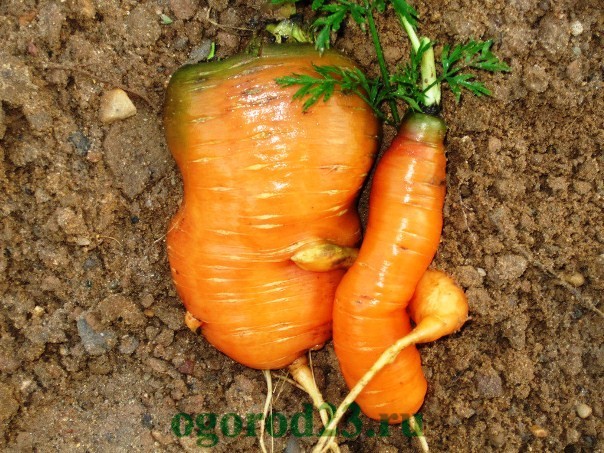To grow a sweet beet, it is necessary to provide her with proper care. How is this best done? Watering and feeding are very important for her. Otherwise, it can grow unsweetened, stiff, fibrous or even inedible.
.- The main reasons why beets grew insipid
- Care for beets, fertilizing and sugar content
Beetroot (we call it Burak) refers to fast-growing vegetable crops that can be grown almost anywhere. Although it is better known as a root crop, all its parts are edible. Greens of young plants are used in early spring in salads..
Burak is a vegetable with a unique color, sweet taste. The most famous varieties with bright maroon roots, but gold or striped species have made beet cultivation more popular in recent years. So why can beet be tasteless, tough, unsweetened? There can be several reasons.
.The main reasons why beets grew insipid
- First, substandard seeds,
- secondly, incorrect agricultural technology,
- Thirdly, much depends on the size of the root vegetables collected for storage.
One of the causes of beet bitterness is uneven watering, drying out of the soil, crusting after watering or rain. Place a piece of cardboard on a bed of seeded seeds until they germinate. This will protect the soil from the crust during the rains, will help to keep the land moist. In case of cardboard drying, continue to water it from above. After the appearance of beet shoots, cardboard can be removed, but do not forget to keep the soil moist.
↑ back to content ↑Care for beets, fertilizing and sugar content
Table beet is especially demanding for moisture at the beginning of growing season, and also during the growth of root crops. She loves a humus-rich land, well-burrowed, so that there is sufficient air access to the root system.
Timely breakthrough, thinning of seedlings are necessary, since with thickened sowing root crops are not tied badly.
Top dressing in the beds is best done with infusion of mullein, wood ash (3 cups per 1 sq. Km.). m). Taste quality of root crops will be improved if they are fed with ashes, which, in addition to nutrition, also reduces the acidity of the soil. Beetroot grows poorly on acidic soils. Optimum acidity for growing a sweet, delicious vegetable is neutral and slightly alkaline(pH, ). But do not overdo it with organic. Overcorned with organic fertilizers, the beet can not at all tie a root crop or root crops will be small - all the force will go into the leaves.
.The presence in the soil of a trace element, such as boron, contributes to the normal formation of the sugar content of beets, other useful nutrients. At least once a season, pour it with a solution of boric acid (10 grams per bucket of water). Boron as a trace element is usually not enough in sandy, sandy loam or marshy soil. If your land has another type of land, then it will be enough to process the beetroot solution with beet seeds before sowing (1 g of boric acid per 2 liters of water).
By the way, I met feedback on the treatment of a garden bed with a non-sweet beetroot solution. Root crops practically on the next day become sweet, but the solution should be more concentrated - 2 tablespoons of boric acid per 4 liters of water. Honestly, she did not feel this way herself. If you try, then write in the comments about whether it helped your beetroot to become sweet or not.
It is common knowledge that ordinary table salt increases the sugar content of beets, that is, this method will help to grow sweet beets. You can try the top dressing made according to this recipe: 1 teaspoon of salt per bucket (10 liters) of water is the norm per 1 sq. M. m. It is necessary to feed in three stages. First, when the first six leaves grow. Then, when the roots themselves get out 3-5 cm above the surface of the earth, and after two weeks - pour the salt solution the last time.
Foliar top dressing with table salt also helps against the main pests of beet - a summer fly, a butterfly butterfly. To do this, use 60 g (2 tablespoons without top) of rock salt for 10 liters of water. Salt should not be iodized.
.The most delicious beetroots are with root crops not more than 5-6 cm in diameter.
The larger has a less sweet taste, can be stiff, fibrous. That is, if you want to grow a sweet beet, pick it up when it has not yet reached its maximum size.
.Burak very much likes the loosened soil, which lets the air in to the roots. Thus, root crops grown in dry, hard ground acquire a bitter taste. To sugar beets grew sweet, loosen rows between each watering or after each rain. Do not allow the formation of a crust on the surface of the earth. If this is difficult for you, the mulching of rows between mown grass, straw, sawdust, sheets of cardboard will protect the soil from drying out, crust formation. Yes, by the way, there will be fewer weeds.


